2003 ROTC Hall of Fame Inductees
Col. (Ret.) Joseph H. Stangle, Purdue University Class of 1934
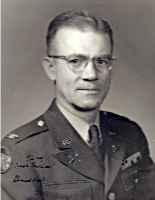
Born July 16, 1912, to a prosperous farming family in Vincennes, Indiana, Joseph H. Stangle excelled in academics and sports in high school (lettering in varsity baseball). He won a scholarship to Purdue University in 1930 and enrolled in Army ROTC.
He completed his bachelor of science in electrical engineering in 1934 and was commissioned through the Thomson Act on 18 August 1936—one of 50 cadets throughout the United States to win active duty commissions with the U.S. Army Reserve.
His first assignment was at Camp NP-4-C at Estes National Park in the Rocky Mountains of Colorado, where he supervised young men employed in the Civilian Conservation Corps, which was a New Deal era employment program administered and managed by Army officers.
On 1 July 1938, Stangle accepted an appointment to the Regular Army as a Field Artillery officer. Later that year he embarked at New York on the
S.S. St. Mihiel for duty at Schofield Barracks, Hawaii where he served as a battery commander.
In November 1940 he was transferred to Fort Ord, California where he served as Battalion Executive Officer and Battalion Adjutant of the 31st Field Artillery Battalion.
Promoted to major, Stangle assumed command of the 387th Field Artillery Battalion of the 104th Infantry Division (Timberwolves) in November 1942. The division organized and trained at Camp Adair, Oregon and arrived in Europe in October 1944.
The 104th entered combat the following month and fought through northern France, Holland, and finally into Germany at Cologne. The 104th Division earned the distinction of serving more continuous days in combat than any other combat division in the U.S. Army in Europe.
Promoted to lieutenant colonel in May 1943, his rapid rise demonstrated both his talent as well as the needs of a nation at war. By V-E Day, Stangle had earned campaign credit for battles in Northern France, Rhineland and Central Europe.
After the war he served in various staff assignments in occupied Japan, the 2nd Armored Division, Fort Hood, Texas, and in an ROTC assignment at St. Mary’s University in San Antonio, Texas. Promoted to colonel in August 1952, he completed the Command and General Staff Course at Fort Leavenworth, Kansas (where he was subsequently an instructor) and graduated from the War College, Carlisle Barracks, Pennsylvania.
In August 1955 the Army assigned him as Chief of Mission in Teheran, Iran, where he advised the Iranian National Police (Gendarme.) In January 1957 he returned to the United States to accept the assignment of Chief, Public Affairs Division at the Pentagon in Washington, D.C.
In August 1958 he accepted his final active duty assignment as Professor of Military Science at St. Bonaventure University. He retired from active service in August 1962. Upon completing his military career, he accepted a position as instructor in the Mathematics Department at St. Bonaventure, where he taught until retiring in 1974.
He also taught at Christ the King Seminary and published an article in
Vox Regis (the official seminary journal.) Colonel Stangle died on 10 January 2001 and was survived by his wife, Helen Marie Brown and daughters JoEllen Stangle Coppersmith, Mary Jane Storms, Sarah Sue Stangle; eight grandchildren and twelve great-grandchildren.
His military awards include the Bronze Star Medal, European-African-Middle Eastern Campaign Medal, Army of Occupation Medal with Japan and Germany Clasp, American Campaign Medal, American Defense Service Medal, National Defense Service Medal and the Army Commendation Medal.
Col. (Ret.) John P. Caruso, Class of 1953
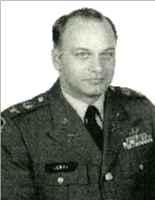
A Distinguished Military Graduate of St. Bonaventure University, John P. Caruso earned his Bachelor of Science degree and was commissioned a field artillery second lieutenant through the Army ROTC program in 1953.
He completed the Field Artillery Officer Basic Course, and was assigned to the 135th Field Artillery, 37th Infantry Division, Camp Polk, Louisiana. Earning jump wings in March 1954, he held a number of positions in the 82nd Airborne Division’s 456th Field Artillery and married the former Alice Bishop of Little Valley, New York at the St. Bonaventure Chapel.
Caruso completed the Surface-to-Surface Missile Battery Officer Course at Fort Sill, Oklahoma in June 1957 and was assigned to the 557th FA Missile Battalion (Corporal) in Ansbach, Germany, where he commanded a firing battery, was promoted to captain and was battalion S3 until he attended the Field Artillery Officer Advanced Course.
In June 1957, he was assigned to the Nuclear Weapons Employment Division, where he instructed for two years. Attending the Civic Action Advisor Course, Fort Gordon, Georgia from March to May 1963, he was assigned to Advisory Team 41, Military Assistance Command, Vietnam at Song Mao, where he advised the operations officer of a Civil Guard Training Center and was an Advisory Team staff officer during a one-year tour.
Promoted to major in June 1964, the next three years included completion of the Military Assistance Training Advisor Course, six months of Persian Farsi study, duty as S1 of the 6th Special Action Force, Fort Bragg, North Carolina, award of the MOS Prefix 3 (Special Forces Officer) and assignment as Assistant Chief of Staff, JFK Center for Special Warfare.
Selected for promotion to lieutenant colonel, he graduated from Command and General Staff College in June 1968, and in August assumed command of the 2nd Battalion, 73rd Artillery (Honest John), 3rd Armored Division, Hanau, Germany.
Caruso joined the 1st ROK Army Detachment, Korea Military Advisory Group at Camp Long, Wonju, where he served as Deputy Senior Advisor to the Commander of the 1st ROK Corps and later as Senior G1 Advisor to the Commanding General, First ROK Army and Detachment G1.
Caruso was assigned to USSTRICOM (later U.S. Readiness Command), MacDill Air Force Base, Florida in April 1971 as Unconventional Warfare Plans Officer in the Plans and Policy Division, J5, Plans and Policy Directorate. He developed, tested and published a joint Unconventional Warfare SOP that was incorporated in JCS Pub 10,
Joint Procedures and joined the Centurion Club of the Airborne Association upon completion of his 100th parachute jump before being assigned as Deputy Commander/Chief of Staff, Southwestern Regional Recruiting Command, Fort Sam Houston, Texas in May 1974.
Promoted to colonel in 1975, he completed the Army War College and a master’s degree in public administration at Penn State, Capitol Campus. He returned to Korea in 1976, served as Deputy Artillery Officer, I Corps (ROK/US) Group, Uijongbu, was involved in the response to the Panmunjon Incident and developed artillery fire procedures that were incorporated into FM 6-40,
Field Artillery Gunnery.
He became an instructor in the Industrial College of the Armed Forces’ Department of Resource Management in 1977, and later served as the director of that department and as the Dean of Students and Administration/Deputy Commandant.
Having reached the 30-year limit for years of maximum service, Colonel Caruso retired on 31 July 1983. His awards and decorations include the Defense Superior Service Medal, Legion of Merit, Bronze Star, Meritorious Service Medal (2 OLC), Joint Service Commendation Medal, Army Commendation Medal (10 OLC), National Defense Service Medal (1 OLC), Vietnam Service Medal, Armed Forces Expeditionary Medal, Army Service Ribbon, Overseas Service Ribbon (Three Awards), Republic of Vietnam Campaign Medal, Master Parachutist Badge, Republic of Vietnam Gallantry Cross Unit Citation With Palm and two Overseas Service Bars.
2002 ROTC Hall of Fame Inductees
Capt. Raymond C. Dee (1964-1968), Class of 1964
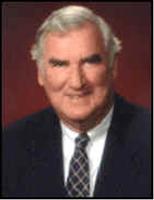
Born in the Bronx and raised in Utica, New York, Raymond C. Dee came to St. Bonaventure University as a freshman in 1960.
He enrolled in the Army ROTC program and became active as a leader very early in his college career. Before he graduated in 1964, Dee had been a three-time class president, president of CCD and a member of the Third Order Franciscans, Pi Omicron Phi, Delta Sigma Chi and the Investment Club.
He served as the cadet colonel and in his senior year, was elected president of the University’s “105” Club. Named in recognition of the common field artillery piece upon which St. Bonaventure cadets of the time trained, this was the social and professional organization of cadets that later evolved into the Gold Bar Club
Dee graduated from St. Bonaventure University with a Bachelor of Business Administration in Economics and was commissioned as a U.S. Army field artillery second lieutenant. He graduated from the Field Artillery Basic Course at Fort Sill, Oklahoma and was ordered to Germany, where he served in several leadership and staff assignments for three years.
He returned to the United States for additional military education, and served as a captain for another one and a half years. His initial entry obligation complete, Dee chose to leave the Army for civilian life and was honorably discharged in 1968.
Dee earned a Masters of Business Administration from Loyola University of Chicago, and worked in positions of increasing responsibility with the Aluminum Company of America (ALCOA) until 1979. At this point, he joined two former associates from Alcoa and bought Cressona Aluminum Company, a Pennsylvania facility that Alcoa had shut down in 1977.
Dee became the company’s Vice President of Sales, Executive Vice President and a member of the board. In 1996, Dee and his associates sold the company to Alumax, and shortly thereafter, he joined British Aluminium in Banbury England as the Managing Director of British Aluminium Extrusions.
He remained in this capacity for two and one half years before returning to the United States to assist in the management of Valley Technologies, a company he purchased in 1997.
Dee is currently the Chairman of the Board of Valley Technologies in Pottsville, Pennsylvania and is a member of the St. Bonaventure University Board of Trustees. Prior to being elected to the University’s Board of Trustees in 2000, he served on the President’s Council, National Alumni Board and Capital Campaign.
He also has provided leadership for the Annual Bonaventure Fund, taking on the posts of national vice chairman and alumni chairman prior to serving as national chairman of the 102nd Annual Bonaventure Fund. In 1990, he was honored as the St. Bonaventure Alumnus of the Year.
Dee has been generous with his leadership talents, serving as a trustee for Alvernia College in Reading, Pennsylvania, as a member of the Board of the Good Samaritan Regional Medical Center, as Chairman of the Board of the Seaton Manor Skilled nursing facility and as president of St. John the Baptist Church Council.
He also serves on the Board of Pennsylvania Free Enterprise, which is involved with training and educating high school students in the free enterprise system. Dee and his wife of 38 years, Maureen, reside in Pottsville, Pennsylvania and have six children, three of whom (Maureen ’88, Denise ’89 and Mary Beth ’94) are St. Bonaventure graduates.
Col. (Ret.) Robert A. Arciero, M.D., Class of 1976
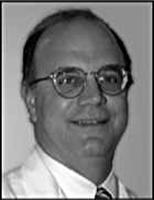
Born in El Paso, Texas, on 8 December 1954, Robert A. Arciero’s family moved to Western New York, and he graduated from Allegany High School in 1972.
He enrolled as a freshman at St. Bonaventure University with a four-year Army ROTC Scholarship, and graduated magna cum laude with a bachelor of science in biology in 1976. Selected for an educational delay to attend medical school, Arciero graduated cum laude from the Georgetown University School of Medicine in 1980.
His first assignment was as a surgical intern at Madigan Army Medical Center in Tacoma, Washington from July 1980 until June 1981, and he was next assigned as a general medical officer in Bremerhaven, Germany between 1981 and 1983.
He returned to Madigan Army Medical Center for his Orthopedic residency, which included experience in the Harborview Medical Center’s Orthopaedic Trauma Service, adult reconstructive rotation at the Swedish Hospital Medical Center and a fellowship in sports medicine at the U.S. Military Academy at West Point.
In January 1987, he was assigned as the chief resident on pediatric orthopaedic rotation at Gillette Crippled Children’s Hospital, St. Paul Minnesota, and upon completing this residency, he returned to West Point for a one-year sports medicine fellowship.
Between July 1987 and June 1990, Arciero served as team physician for the U.S. Military Academy’s NCAA Division I intercollegiate athletic program. During the final year of this assignment, he was the assistant chief of orthopaedics at Keller Army Hospital at West Point.
In August 1990, he was assigned as an orthopaedic surgeon and chief of orthopaedics of the 46th Combat Support Hospital. He deployed to Saudi Arabia and Iraq with this unit during Operation Desert Shield and Desert Storm, where he earned the Bronze Star.
Arciero returned to West Point for his next assignment, and he served as Keller Army Hospital’s chief of orthopaedics, and as a staff orthopaedist. In December 1994, he was named clinical assistant professor at the Uniformed Services University of the Health Sciences, F. Edward Hebert School of Medicine, Bethesda, Maryland, a post in which he continues to serve.
Between July 1991 and August 2000, Arciero was the U.S. Military Academy’s head team physician and the director of the U.S. Army’s Joint & Soft Tissue Trauma Fellowship.
Arciero, having published and presented exhaustively at the national and international level and received numerous awards for excellence, retired from the U.S. Army in October 2000. He is currently associate professor of Orthopaedic Surgery at the University of Connecticut Health Center, where he continues to excel in his profession.
His certifications, licenses and memberships include the National Board of Medical Examiners, American Board of Orthopaedic Surgeons, Alpha Omega Alpha Medical Honor Society, Fellow of the American Academy of Orthopaedic Surgeons, Arthroscopy Association of North America, and the International Society of Arthroscopy, Knee Surgery, and Orthopaedic Sports Medicine.
He holds medical licenses in Washington, Wyoming and Connecticut, and among his numerous professional committee appointments are the Editorial Board for Lippincott Publishing, reviewer for the American Journal of Sports Medicine and editor of the Journal of Arthroscopy.
Colonel Arciero and his wife, Cathy, have four children, Cristina, Michael, Laura and Jonathan.
Capt. (1964-1969) Thomas S. Brett, Class of 1964
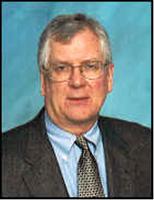
Born in Ithaca and raised in Watertown, New York, Thomas S. Brett was active in many facets of student life as a St. Bonaventure student.
He was a catcher on the varsity baseball team for three seasons, and a captain of the team in his senior year. He played on the University’s first intercollegiate soccer team in 1961 and was one of the first lay prefects in the campus dormitories before he graduated in 1964 with a Bachelor of Science in Economics.
He was commissioned as a U.S. Army Reserve Field Artillery second lieutenant through the ROTC program and accepted a position with General Electric. In 1966, he earned a Master of Science in Business Administration from the State University of New York at Albany and volunteered for active duty that same year.
He completed the Field Artillery Basic Course at Fort Sill, Oklahoma in August 1966 and was assigned to the 3rd Battalion, 16th Field Artillery Regiment (Towed), Fort Bragg, North Carolina, with whom he deployed to the Republic of South Vietnam in May 1967.
In Vietnam, Brett was the Ammunition Officer of the 3-16 Field Artillery, Task Force Oregon, which eventually became the Americal Division, at I Corps in Chu Lai. In July 1967, he was assigned as executive officer of Battery C, 3-16 Field Artillery.
He took the battery on several operations, including Operation Hood River — the first time that 155 mm howitzers were airlifted by helicopter for an airmobile mission. After two more combat operations, he was wounded in an ammunition explosion on 13 August 1967. He had attempted to rescue another soldier, and was burned severely.
Brett was evacuated to a burn unit near Tokyo, Japan, then to Brook Medical Center, San Antonio, Texas. He later received treatment at Walter Reed Army Medical Center. Promoted to captain in June 1968, he was assigned to the Plans/Operations Group, Fort Mead, Maryland in September. In this capacity, he helped to coordinate security for the first inaugural of President Richard M. Nixon.
On 31 July 1969, Brett was released from active duty and returned to Reserve status, having completed his service commitment.
Brett graduated in June 1972 from the Law School of the State University of New York at Buffalo. He served as a trial attorney with the Antitrust Division of the U.S. Department of Justice from 1972 until 1978, and tried a variety of civil and criminal cases in District Courts and Courts of Appeals in Hawaii, California, Oregon, Washington, Illinois, New York and Puerto Rico.
In 1978, Brett became a litigation counsel for Carrier Corporation, and seven years later, joined the regional law firm of Hiscock & Barclay in Syracuse. A partner of that firm until 1997, he founded the Brett Law Firm LLC, which specializes in commercial litigation, real estate and corporate matters, in May 1997.
A member of the Varsity B Club, Brett has remained active as an alumnus of the University, serving as vice president of the National Alumni Association from 1975 until 1977. He is a board member of the Vietnam Veterans Leadership Program of Central New York, as well as a board member of the Fayetteville-Manlius Little League and Valley Babe Ruth League.
He has been active in the Immaculate Conception Parish, Fayetteville, New York, and as a delegate for John McCain during the State’s primary election in 2000. Brett and his wife Bennett M. Brett live in Fayetteville, New York and are the parents of two children, Andrew Brett and Christian Brett.
His military decorations include the State of New York Conspicuous Service Cross, National Defense Service Medal, Vietnam Service Medal, Vietnam Campaign Medal and the Purple Heart.